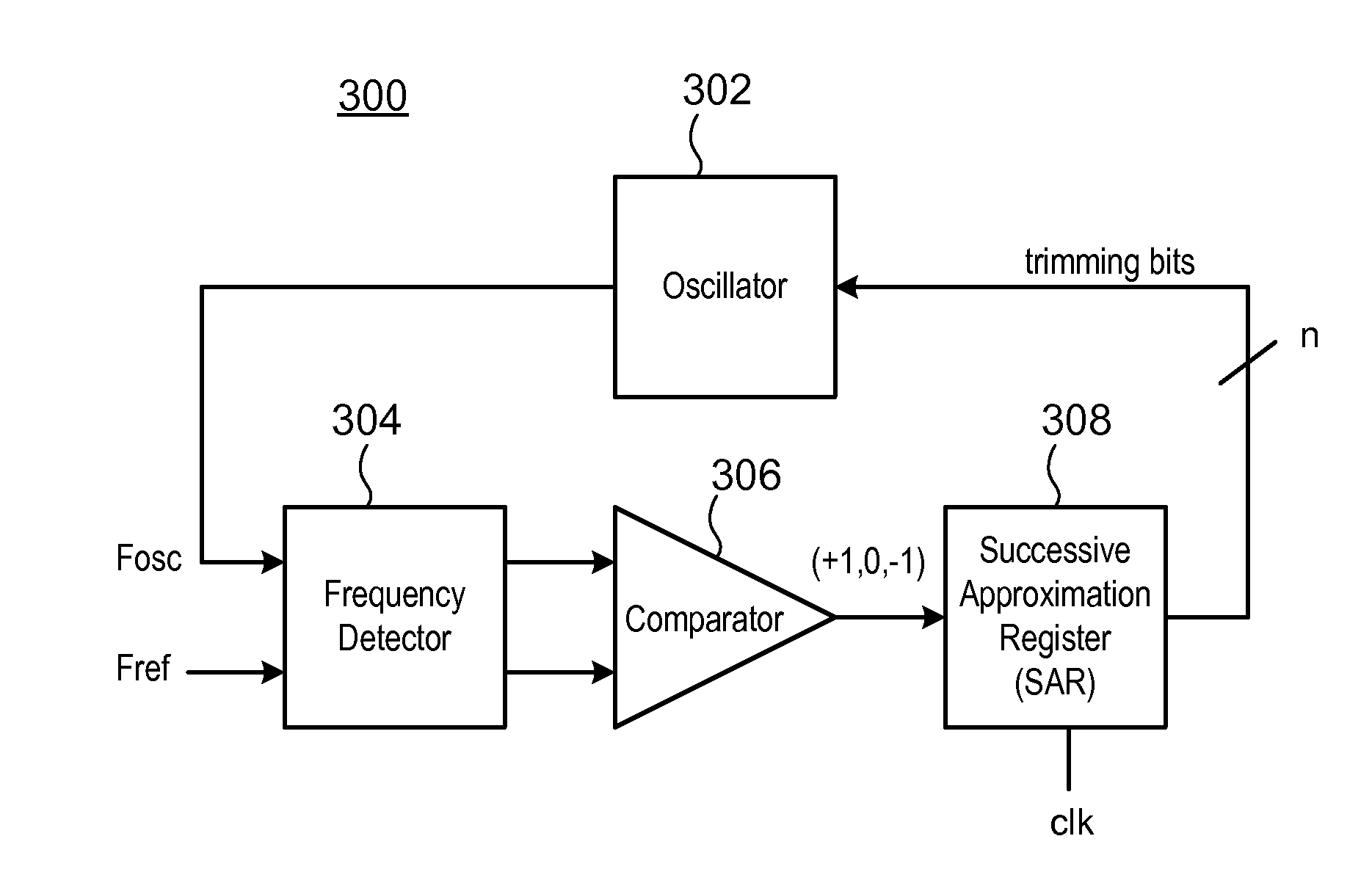Auto trimming oscillator
a technology of auto trimming and oscillator, which is applied in the direction of automatic control, electrical equipment, etc., can solve problems such as difficult to find a solution, and achieve the effects of low cost fabrication, small area, and fast and accurate determination of oscillator trimming values
- Summary
- Abstract
- Description
- Claims
- Application Information
AI Technical Summary
Benefits of technology
Problems solved by technology
Method used
Image
Examples
example trimming sequence
[0021]FIG. 4 includes graphs illustrating the example trimming sequence shown in Table I. In this example, the auto trimming oscillator 300 shown in FIG. 3 has been synthesized using a 0.15 um CMOS process. The reference frequency (Fref) is 4 MHz and the SAR 308 provides 7 trimming bits (e.g., 7-bit digital codes).
[0022]Graphs “a” and “b” illustrate an example trimming sequence for providing the digital code necessary for the oscillator 302 to compensate for process variation. More particularly, graph “a” represents the frequency of the oscillator 302 versus time and Graph “b” is a digital bit (also referred to as the “eot signal”) that controls the overall trimming sequence duration. Graph “a” shows a 7 step trimming sequence where the reference frequency is about 4 MHz and the oscillator frequency is about 3.5 MHz. The auto trimming sequence starts when the eot signal (Graph “b”) goes low.
[0023]At step 0, Fosc is initialized by a trimming code representing a midrange value of the ...
PUM
 Login to View More
Login to View More Abstract
Description
Claims
Application Information
 Login to View More
Login to View More - R&D
- Intellectual Property
- Life Sciences
- Materials
- Tech Scout
- Unparalleled Data Quality
- Higher Quality Content
- 60% Fewer Hallucinations
Browse by: Latest US Patents, China's latest patents, Technical Efficacy Thesaurus, Application Domain, Technology Topic, Popular Technical Reports.
© 2025 PatSnap. All rights reserved.Legal|Privacy policy|Modern Slavery Act Transparency Statement|Sitemap|About US| Contact US: help@patsnap.com



